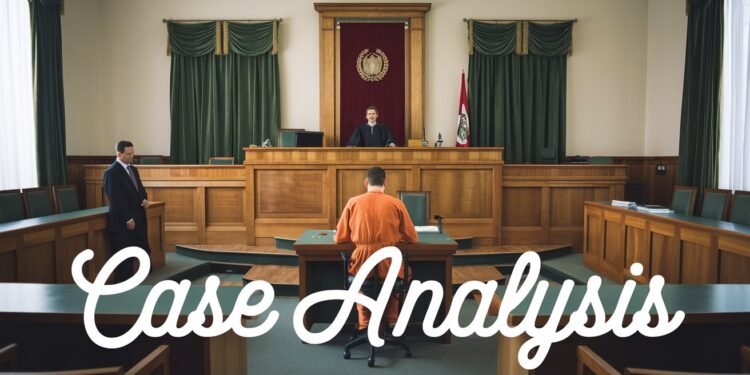Author Gauri Sharma from Guru Gobind Singh Indraprastha University, Delhi
INTRODUCTION
The topic of the death penalty is a highly debated issue in Indian law, balancing justice and human rights carefully. Capital punishment, commonly known as the death penalty, is when the state legally executes a person as a punishment for committing different crimes. Throughout history, it has been used for a wide range of crimes, but in modern times, it is typically only used for the most serious offenses, such as murder and terrorism. Advocates argue that it serves as a deterrent for more serious offenses, guarantees justice for victims, and helps to prevent repeat offenses by dangerous individuals.
Nevertheless, the use of capital punishment sparks significant moral, ethical, and legal debates. Critics also criticize it for infringing on the right to life, killing innocent people, and disproportionately targeting marginalized groups. Experts debate the lack of evidence supporting the effectiveness of the death penalty as a deterrent compared to life imprisonment. The fact that it cannot be undone also means that errors cannot be fixed, thus leading to demands for its elimination. For years, the Supreme Court of India has been dealing with this issue by finding a balance between justice and the fundamental rights of individuals. The ongoing dispute has been greatly influenced by the corrective legal principles regarding the important ruling in Shatrughan Chauhan v. Union of India (2014). This particular case addressed the critical issue of delays in carrying out death sentences and the subsequent impact on infringing upon the constitutional rights of the convicted individuals in India.
FACTS OF THE CASE
Shatrughan Chauhan and a few others were on death row for committing serious crimes. The petitioners had waited for several years for their mercy pleas to be heard by the President of India, leading to great mental anguish and distress for them. The argument was that this punishment was cruel and inhuman, breaching their basic rights granted by Article 21 of the Constitution of India, which ensures the right to life and personal freedom.
Shatrughan Chauhan’s petition was combined with numerous other petitions that raised similar concerns. These instances have brought up a significant issue surrounding the delayed submission of mercy pleas and how it affects the rights of death row inmates. The primary concern presented to the Supreme Court was determining if there was excessive delay in carrying out a death penalty and if it would be fair to instead change the sentence to life imprisonment.
LEGAL ISSUE
The Supreme Court had to address critical legal inquiries.
- Does excessive delay in processing mercy petitions under the Indian Constitution infringe upon Article 21 rights?
- Can a delay like this be used as a reason to change a death sentence to life imprisonment?
- What level of power can the President/Governor exercise according to Articles 72 and 161 of the Constitution?
- What is the appropriate way to care for inmates who experience a mental disorder while serving time on death row?
- Which procedural safeguards must be implemented to guarantee the humane treatment of individuals on death row?
PETITIONER’S ARGUEMENTS
The petitioners argued that the excessive postponement of their death sentence led to severe mental anguish and emotional distress, thus breaching their rights to protection from cruel, inhuman, and degrading treatment. They maintained that the delays infringed upon their right to life as outlined in Article 21 of the Constitution. The argument was made that the executive’s delay in rejecting the mercy petitions was not justified and therefore, the death sentence should be changed to life imprisonment.
RESPONDENT’S CLAIMS
The Union of India argued against those claims, stating that the delay in handling the mercy petitions was not unjustified or random, and that each case needed to be considered individually. Additionally, the government emphasized that delaying the commutation of a death sentence solely due to time passing would undermine its deterrence impact.
The Supreme Court made a historic decision to change the death penalties of 15 prisoners to life imprisonment due to excessive delays in handling their mercy pleas. The three-judge bench comprising of Justices P. Sathasivam, Ranjan Gogoi, and Shiva Kirti Singh issued the ruling.
SUPREME COURT’S REASONING
- Breach of Article 21: The Supreme Court stated that prolonged postponement of carrying out a death penalty, caused by factors unrelated to the prisoner, constitutes torture and breaches the right to life as per Article 21 of the Constitution. The emotional distress caused by the postponement of the execution was inhumane and degrading treatment that violated the Constitutional right to life and personal liberty.
- The Court ruled that significant delays in handling mercy petitions can be a reason to reduce a death sentence to life imprisonment. The court highlighted that the convict should not be held responsible for the delay, and the psychological distress experienced by the convict as a result of the delay must be considered in the decision on commutation.
- The Court also examined the use of clemency powers by the President and Governors as stated in Articles 72 and 161. It was asserted that the President and Governors have a responsibility to use their power wisely and any unjustified delays would be subject to legal review. The Court restated that such function must be devoid of arbitrariness, capriciousness, or mala fide.
- Legal assistance is a fundamental right. The Supreme Court has reaffirmed the entitlement of death row inmates to legal assistance, especially in regards to submitting mercy pleas. It was determined that the State is responsible for ensuring that convicts receive proper legal aid throughout the entire process of deciding their fate, whether it be through court decisions or a mercy plea to the President, so they have proper legal representation.
- The mental wellbeing of death row inmates: The court ruled that if a convicted inmate realizes they are mentally unstable, the implementation of the death sentence will be halted. The court also stressed the importance of addressing such matters compassionately and ensuring the prisoner receives required medical care. The court also ruled that it would be unconstitutional and violate principles of fairness to execute an individual falling within that category.
- Rules for carrying out capital punishment: The Supreme Court provided a number of rules to be strictly adhered to when implementing the sentence to ensure it is carried out fairly and with compassion. A written notification should be given to the convict informing them of the President/Governor’s rejection of their mercy plea.
- Before the execution, the death row inmate is expected to have a last meeting with their family and legal counsel.
- A minimum of 14 days must pass between the rejection of the mercy petition and the scheduled execution date to allow the prisoner time to file an appeal at that stage.
- It is against the constitution to isolate a prisoner in solitary confinement before the mercy petition has been officially rejected. The execution will be postponed if the inmate is experiencing a mental disorder or another condition that makes them unfit for execution
EFFECTS OF THE DECISION ON THE SOCIETY
The decision in Shatrughan Chauhan has essentially opened the door for changes in the administration of the death penalty. The Court’s recognition that a postponement in carrying out a death penalty could violate essential rights has strengthened protections for individuals on death row. The Shatrughan Chauhan ruling emphasized the importance of the executive using its clemency power carefully and efficiently, and preventing unnecessary delays in the process.
In a recent ruling, death sentences were changed in several cases due to excessive delays in deciding mercy petitions. This restates the idea that capital punishment should only be given in the most exceptional circumstances, and even then, the rights of the person being convicted must be carefully protected.
Furthermore, the ruling has specified clear instructions for both the executive and the judiciary in relation to their responsibilities when handling cases of individuals facing the death penalty. These guidelines guarantee that the procedure remains humane and that the rights of the prisoners are respected while carrying out a death penalty.
CRITICISM
The decision of Shatrughan is considered a groundbreaking judgment, praised for its support of human rights, but has also faced significant criticism. Some argue that commuting the death sentence due to delays in carrying out the execution could undermine the deterrent effect of the death penalty. Some believe this ruling will make it possible for a criminal to purposely prolong the legal process to avoid being executed.
There are concerns that it could lead to more mercy pleas being submitted, which could further burden the already overwhelmed executive branch. This could potentially be influenced by additional delays, leading to a continuous cycle of delay and changes.
CONCLUSION
The decision in *Shatrughan Chauhan v. Union of India, (2014)* marks a significant step in the advancement of safeguards for individuals on death row in India. The Court has reaffirmed that even in the most heinous of circumstances, the dignity of a convict’s rights is protected, by declaring that postponing a death sentence is considered cruel and inhuman treatment.
The ruling has highlighted the necessary details for the use of clemency powers by the President and Governors, as well as the importance of careful decision-making. The Court’s guidelines have increased the procedural safeguards for death row convicts to ensure a humane and fair execution process. While facing criticism from some, the *Shatrughan Chauhan* case remains highly significant due to its strong emphasis on Indian legal principles and the importance of upholding human rights and the rule of law in the justice system. The situation involving *Shatrughan Chauhan* will certainly be remembered as an important reference in the debate on the death penalty in India, highlighting the need for a balanced approach that considers both justice and individual rights.
REFERENCE
Manupatra. (n.d.). Manupatra – An Online Database for Legal Research. Www.manupatrafast.com. https://www.manupatrafast.com/?t=desktop
Constitution of India | Legislative Department | India. (n.d.). https://legislative.gov.in/constitution-of-india/



